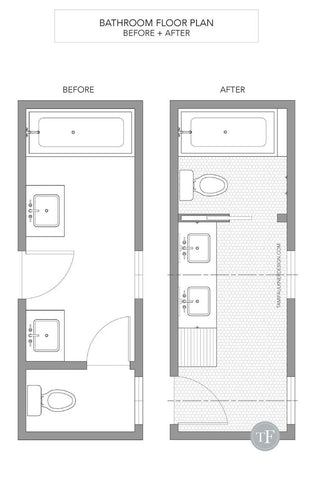Redesigning Your Bathroom: Can You Easily Rearrange Fixtures?
Are you considering giving your bathroom a makeover? Perhaps you're tired of the current layout or feel like it's time for a change. Many homeowners often wonder if they can easily move fixtures like sinks, toilets, and showers around to create a new layout. In this blog post, we'll explore the possibilities and considerations when it comes to changing the layout of your bathroom.
Understanding the Layout:
Before diving into any renovation project, it's crucial to understand the current layout of your bathroom and identify what changes you'd like to make. Take note of where the sink, toilet, shower, and any other fixtures are currently positioned. Consider factors such as plumbing connections, electrical wiring, and structural limitations.

Moving Fixtures:
One of the most common questions homeowners have is whether they can move fixtures like sinks, toilets, and showers easily. The answer depends on various factors, including the existing plumbing and structural layout of your home.
1. Sinks: Moving a sink typically involves rerouting water supply lines and drainpipes. If your home has accessible plumbing from underneath or behind the walls, relocating a sink may be feasible. However, keep in mind that moving plumbing fixtures can be complex and may require professional help to ensure proper installation and compliance with building codes.
2. Toilets: Relocating a toilet is often more challenging than moving a sink due to the intricacies of the plumbing system. Toilets require a waste pipe connection to the sewer or septic system, making relocation more complicated. Depending on the layout of your home and the proximity of existing plumbing lines, moving a toilet may require significant modifications and should be carefully planned.
3. Showers: Moving a shower can also be a complex task, especially if it involves relocating drainpipes and water supply lines. The feasibility of moving a shower depends on the existing plumbing configuration and structural considerations. Additionally, factors such as waterproofing and tiling may need to be addressed to ensure a seamless transition.

Considerations Before Renovation:
Before embarking on a bathroom renovation project and attempting to change the layout of fixtures, consider the following:
-
Budget: Rearranging plumbing fixtures can add significant costs to your renovation budget. Factor in expenses for materials, labor, and any unforeseen complications that may arise during the renovation process.
-
Building Codes: Ensure that any changes to the layout comply with local building codes and regulations. Plumbing and electrical work must meet safety standards and obtain necessary permits to avoid legal issues down the line.
-
Professional Help: While some homeowners may attempt DIY renovations, complex tasks like relocating plumbing fixtures often require professional expertise. Hiring licensed plumbers and contractors can ensure that the work is done correctly and up to code.







